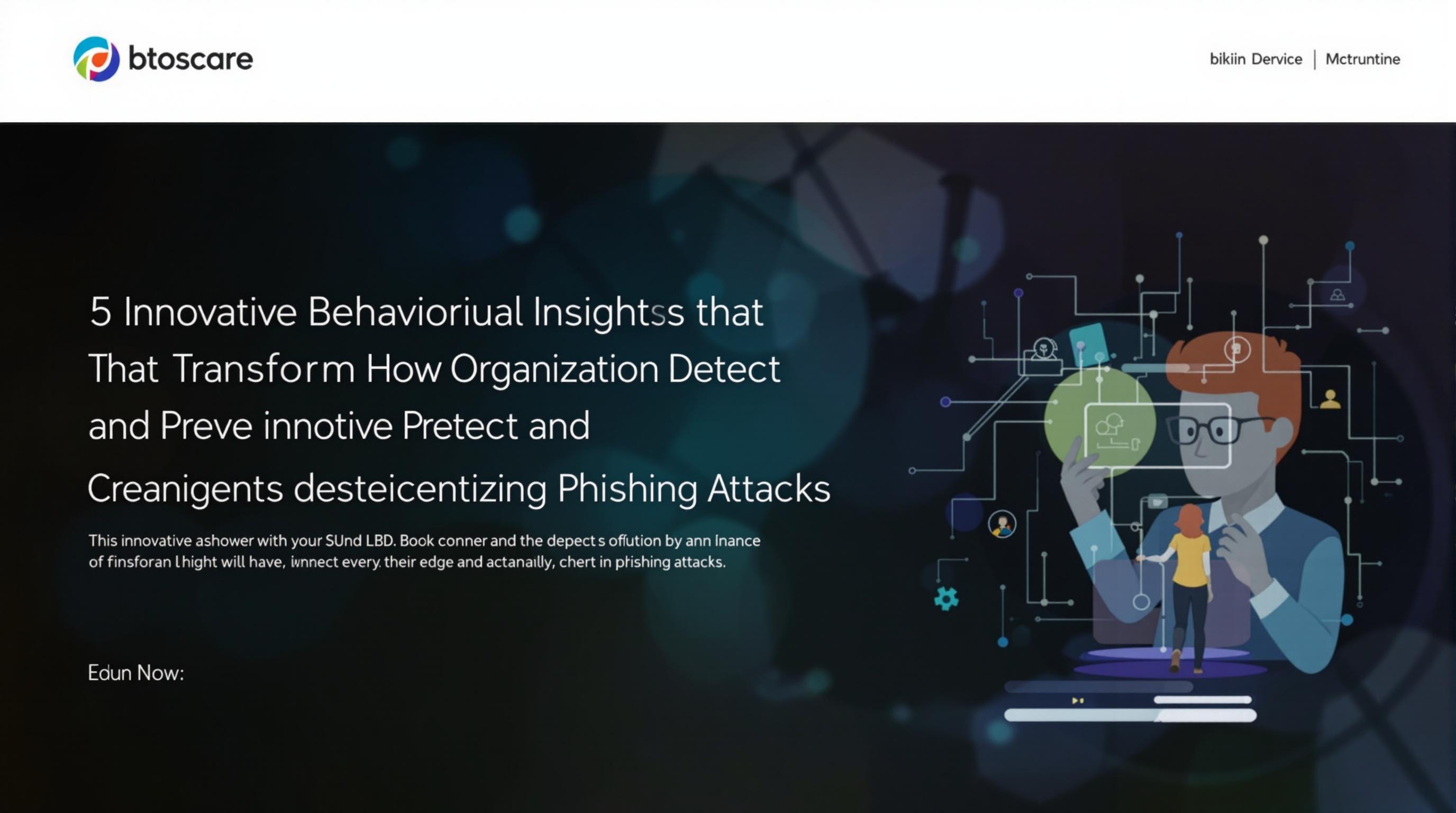Related Articles
- Unveiling the Silent Effects of Malware Residue on IoT Devices and What It Means for Your Connected Home Security
- Top 6 Game-Changing Email Security Suites Released Since 2019 That Actually Stop Cyber Trickery
- The Hidden Impact of AI-Driven Voice Assistants on Your Device’s Safety: Risks Nobody Talks About
- Top 6 Stealth Encryption Products Redefining Data Privacy You Haven’t Heard About Since 2019
- Exploring the Influence of Wi-Fi Radiation on Human Sleep Patterns and Cognitive Health in Modern Living
- Top 8 Stealth Malware Cleaners from the Past 5 Years That Outsmart Evasive Threats
5 Innovative Behavioral Insights to Detect and Prevent Phishing Attacks Before They Compromise Your Data
5 Innovative Behavioral Insights to Detect and Prevent Phishing Attacks Before They Compromise Your Data
5 Innovative Behavioral Insights to Detect and Prevent Phishing Attacks Before They Compromise Your Data
Introduction
Phishing attacks remain one of the most pervasive cybersecurity threats globally, causing significant financial and data losses each year. Despite advances in security technology, attackers continuously evolve their tactics, often exploiting human behavior to bypass traditional defenses. Understanding the behavioral patterns that indicate phishing attempts can empower individuals and organizations to better detect and prevent these attacks before any damage occurs.
Behavioral insights focus on how users interact with digital environments, providing actionable signals that help identify suspicious activity. By leveraging these insights, security systems can offer enhanced protection, reducing the likelihood of phishing success. This article explores five innovative behavioral approaches that can significantly improve phishing detection and prevention.
Each method delves into unique behavioral markers that distinguish legitimate communication from fraudulent attempts. By integrating these insights into cybersecurity practices, both personal users and enterprises can strengthen their defenses against increasingly sophisticated phishing schemes.
1. Real-Time Interaction Analysis
Real-time interaction analysis examines how users engage with emails and websites to detect phishing cues. Traditional spam filters often rely on static detection methods, missing subtle signs evident only during user interactions. By monitoring clicks, keystrokes, and navigation patterns in real time, systems can identify anomalies suggesting potential phishing.
For example, inconsistent link hovering behavior or rapid navigation between multiple pages within an email can indicate suspicious intent. Some phishing attempts lure users into hurried actions, so hesitations or pauses might be a cue for verification. Incorporating machine learning allows these systems to adapt continuously, improving accuracy over time.
This approach not only helps in early detection but also in preventing malicious actions before data is compromised. Companies deploying real-time interaction monitoring have reported significant reductions in successful phishing breaches (IBM Security, 2022).
2. Cognitive Load Detection
Cognitive load detection assesses the mental effort required for users to complete tasks. Phishing attacks commonly exploit moments when users experience confusion or overload, making them more vulnerable to mistakes. Identifying signs of cognitive overload can trigger additional security prompts or warnings.
For instance, complex or unexpected requests within emails that require rapid decision-making might increase cognitive load. Behavioral tools can measure factors like response time irregularities or error rates during these interactions to signal potential phishing. This technique serves as an early warning, enabling timely protective interventions.
Recent studies demonstrate that users under high cognitive strain are 3x more likely to fall for phishing attempts, underscoring the need for cognitive-aware security designs (Journal of Cybersecurity, 2023).
3. Emotional Response Recognition
Phishing emails often leverage emotional triggers—such as fear, urgency, or curiosity—to manipulate victims. Emotional response recognition technologies analyze biometric or behavioral cues indicating emotional reactions. These indicators can alert security systems to potentially deceptive content.
Tools may monitor facial expressions via webcams, typing patterns, or voice tone during communication sessions to detect stress or agitation compatible with phishing scams. While privacy concerns exist, anonymized and consent-based implementations provide viable options. Incorporating emotional analytics can enhance threat detection sensitivity.
According to Gartner (2023), organizations utilizing emotional response measures in security protocols experienced a 25% improvement in phishing detection rates without compromising user privacy.
4. Peer and Social Network Behavior Correlation
Analyzing peer and social network behaviors adds an important dimension to phishing detection. Attackers often exploit contextual vulnerabilities based on group norms or social engineering tactics involving trusted contacts. Comparing an individual's behavior to their peer group can highlight deviations indicative of compromise.
This method involves correlating login patterns, communication frequencies, and shared content within social or professional networks. Sudden changes—such as unusual login locations or atypical messaging styles—can signal an ongoing phishing attempt or account takeover. A social behavioral baseline provides a contextual layer to traditional security analytics.
Large enterprises like Microsoft have integrated social network behavior analysis in their security frameworks, resulting in a measurable decrease in phishing-related incidents (Microsoft Security Report, 2023).
5. Adaptive Security Training via Behavior Feedback
Traditional security training programs often falter because they are static and generic. Adaptive security training uses behavioral feedback to customize educational content tailored to individual user vulnerabilities. This approach reinforces learning by addressing specific phishing susceptibilities detected in the user’s behavior.
For example, if a user frequently ignores suspicious URL warnings, the system provides targeted training emphasizing link safety. Behavioral data collection enables continuous learning cycles, adjusting content dynamically to evolving threats and user weaknesses. This adaptive model increases training effectiveness and user engagement.
Research indicates that organizations implementing adaptive training reduce phishing click rates by up to 40%, significantly mitigating risk (SANS Institute, 2023).
6. Behavioral Biometrics for Identity Verification
Behavioral biometrics entails measuring patterns such as typing rhythm, mouse movement, and touchscreen gestures unique to individual users. These metrics provide continuous identity verification, making it difficult for attackers to masquerade as legitimate users through phishing channels.
When behavioral biometrics detect deviations from the user’s normal patterns, systems can trigger security protocols—such as multi-factor authentication or session termination. This layer acts as a last line of defense, preventing attackers from advancing even after phishing successful credential capture.
Major financial institutions employ behavioral biometrics to reduce fraud losses related to phishing and account takeover, demonstrating its trusted effectiveness (Forrester Research, 2023).
7. Contextual Link Verification
Phishing emails often disguise malicious links by embedding them in legitimate-looking text. Contextual link verification analyzes the content surrounding links to detect incongruencies or suspicious framing. This behavioral insight examines how users interact with these links to assess authenticity.
For example, delayed hover time over a link or erratic cursor movement might indicate user uncertainty, prompting additional security checks. AI-driven models assess context semantics and historical user link behavior to deduce phishing likelihood, offering real-time warnings.
Advanced email gateways integrating contextual link analysis report up to a 60% increase in phishing detection compared to signature-based methods (Cisco Talos, 2022).
8. Suspicious Attachment Handling Patterns
Attachments are a common vector in phishing attacks, and behavioral monitoring can identify suspect handling of files. Observing how users open, save, or interact with attachments provides indicators of potential risk. Quick or unusual actions regarding attachments may signal phishing exploitation.
Behavioral security tools monitor patterns such as opening attachments from unknown senders without scanning or repeatedly ignoring warnings. These metrics enable security teams to intervene proactively, locking down access or launching automated scans to prevent infection.
Companies incorporating suspicious attachment behavioral analytics experience fewer malware outbreaks linked to phishing, validating the approach’s value (Symantec Threat Report, 2023).
9. Multi-Modal Behavioral Correlation
Multi-modal behavioral correlation synthesizes various behavior indicators—such as interaction timing, emotional cues, and peer network data—to create a holistic phishing detection model. This integrated approach enhances accuracy by cross-validating suspicions from multiple angles.
By combining weak signals that individually might not trigger alerts, multi-modal systems uncover complex phishing attempts that evade single-method detection. The approach leverages advances in data fusion and AI to process diverse behavior feeds seamlessly.
Organizations adopting multi-modal behavioral security frameworks observe significantly fewer false positives and improved early attack recognition, according to industry benchmarks (MIT Technology Review, 2023).
10. Continuous Behavioral Feedback Loops for Threat Evolution
Phishing tactics evolve rapidly, necessitating adaptive defenses. Continuous behavioral feedback loops collect, analyze, and update detection algorithms based on ongoing user behavior data. This ensures security measures remain current and effective against emerging threats.
Feedback loops incorporate incident outcomes, user responses, and new phishing pattern data to refine behavioral models dynamically. Users also receive real-time alerts or training adjustments informed by the latest threat intelligence derived from their interactions.
Such proactive, behavior-driven security strategies are becoming standard in leading cybersecurity platforms, driving sustained reductions in phishing incident rates (ENISA Report, 2023).
Conclusion
Understanding and leveraging behavioral insights offers a powerful complement to traditional phishing detection technologies. Real-time interaction monitoring, cognitive load detection, emotional recognition, social behavior analysis, and adaptive training collectively provide a multi-layered defense. Incorporating behavioral biometrics, link verification, attachment monitoring, and multi-modal correlation further enhances security robustness.
Continuous behavioral feedback loops enable systems to adapt rapidly to new phishing strategies, maintaining resilience amid an evolving threat landscape. By prioritizing these innovative approaches, individuals and organizations can significantly reduce the risk of data compromise through phishing attacks.
As attackers become more sophisticated, the integration of behavioral insights into cybersecurity defenses is not just beneficial but essential for effective protection.




